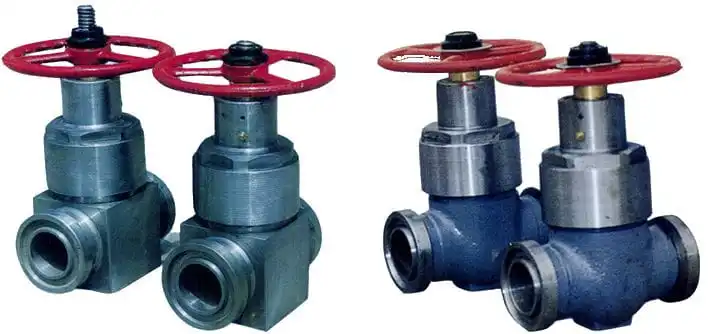1. Leakage between gate valve and gate valve junction
First, check whether valve and gate valve connecting bolts are tight or not, if not tighten, its seal ring and the flange seal groove surface if not sufficiently connected, often lead to leakage. Check bolt and nut orderly, tighten all bolts, until the compress seal ring. Second, check the size and accuracy of the surface of the seal ring and the flange seal groove, if the sealing contact surface has wrong size or too rough, to repair or update it. Also check whether the contact surface of seal ring and the flange seal groove exist a little bit erosion, sand hole, sand holes, or impurities, or other defects, if any, should carry on the corresponding welding, repair, or cleaning up.
2. Leakage from bonnet
Bonnet leakage, this failure phenomenon often occurs in the leakage of packing seal. First, check seal if fitting is correct, whether it is suitable for seal groove, if there is such a problem, replace the sealing ring or repair the seal groove. Second, check if seals have burrs, fracturing, and twist off, if any, replace the seals. Then, check if the surface of sealing groove seal is rough or have other defects, if there is a defect, eliminate the defects or update the damaged parts.
Bonnet or scaffolds by compression seal packing, should check the installation of the packing case, if find packing installed upside down, should remove, carry out in accordance with the correct way to install. Pay special attention to the surface of packing seal joint. Finally, check if the precision of the contact surface of seal fittings meet the requirements.
3. Leakage from valve body cavity
In the process of casting, sometimes valve body may appear casting defects, such as sand holes, sand hole. Although it is difficult to find in the process of machining, once the pressure put on the valve body, hidden casting defects will be exposed. If there is this kind of situation, welding, repairing or updating it.
4. Leakage from valve seat and valve plate
Leakage occurs in valve seat and plate, which is the most common phenomenon among the installation or maintenance of gate valves. Generally this can be divided into two kinds: one is leaking in seal surface; the other is leaking in seal root.
Above all, check the seat and the precision of the sealing contact surface of valve plate. The sealing surface needs grinding, if there is rough surface, remove and grind it again. Second, check whether there are pitting, indentation, sand holes, cracks and other defects the sealing surface, if in this case, replace valve seat and valve plate. For the valve seat with compression spring, should check whether the pressure spring elasticity is conform to the requirements, if less resilient, update the compression spring. Besides, check if T-shape coupling place of valve plate and valve stem is too loose and whether there is a slope, if any, remove the valve plate and adjust it to the best size.
It is easy to drop the welding check, scrap iron, impurities, and other foreign things into opening button. Clean up the clutter before the installation. If forget to clean up or cleaning incompletely, will cause the valve plate can’t closed to the depth expected, resulting in leakage, If in this case, remove the valve body and clean it up.
The valve seat should be installed with special tools. Check whether the seat is installed correctly, if the depth of the thread screw less than expected, the valve seat will occurs leakage, the situation should use special tools for installing valve seat.
5. Inflexible hand wheel rotation
Main reason: a. stem bend torsion; b. the surface accuracy is not enough; c. conducting operation unduly make the thread damage; d. lack of lubricating or lubricant; e. tilt stem nut; f. fit tolerance bites too tight; g. Outdoor gate lacks of protection, resulting in the stem thread covered in dust sand, or be corroded by rain and dew frost and snow; h. Thread is corroded by medium (non-rising stem gate valve or the gate valve whose stem nut on the bottom); i. improper selection of materials, such as the stem and stem nut of materials, easy to bite.
Preventive measures and solutions: a. strictly control the force, not hard twist(refers to the hand wheel and the valve directed directly to valve stem); b. Improve the quality of processing, to meet the specification requirements; c. Operate carefully, do not close and open it unduly; d. check the lubrication, maintain the normal lubrication state; e. Straighten or fixed stem nut; f. revise or update the stem nut, to meet the standard specification; g. often clean dust and sand on the stem nut, lest rust; h. the valve stem of outdoor gate needs a protection; i. It’s better for stem nut to adopt copper material, do not use the same material with that of the valve stem.

Next: The Dragon Boat Festival
Previous: Nov.27th-30th 2012 OSEA
